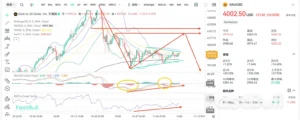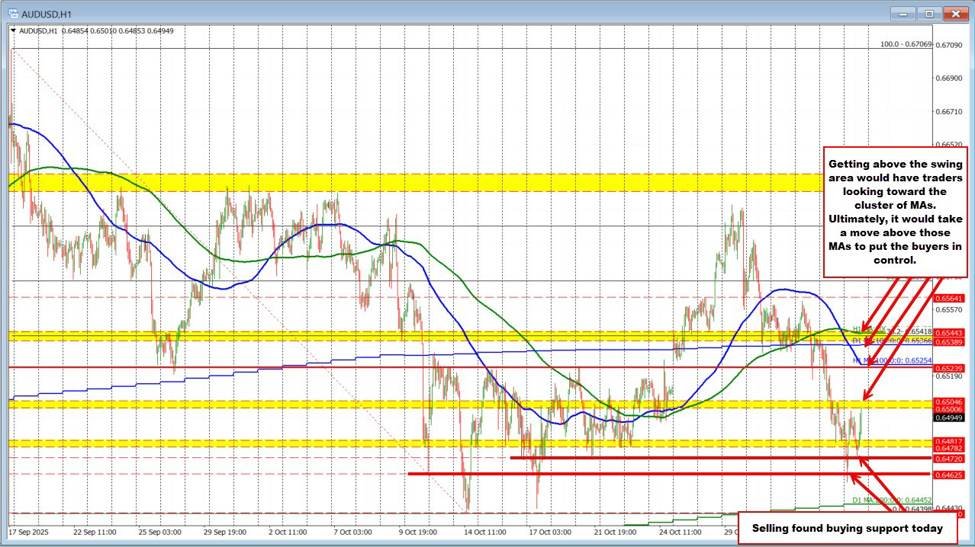AUDUSD Technical Analysis: Volatile Swings and Return to Highs
In the ever-dynamic world of Forex trading, the Australian Dollar versus the US Dollar (AUDUSD) pair has recently demonstrated significant volatility, with prices oscillating dramatically before making a noticeable return to previous high levels. Traders and investors closely monitor such movements, as they provide potential opportunities and risks in currency markets.
Historical Context and Recent Performance
Traditionally known as a pairing influenced by commodity prices, particularly those related to metals and minerals exported by Australia, the AUDUSD has been a go-to for traders who follow global trade flows and interest rate differentials between the Reserve Bank of Australia (RBA) and the US Federal Reserve (Fed).
Recently, after experiencing a period of decline, the AUDUSD has rebounded, storming back to its former highs. This upward trajectory can be attributed to a combination of factors including changes in monetary policy, economic data releases from both countries, and broader global economic sentiments.
Technical Outlook
From a technical perspective, the AUDUSD pair is currently displaying intriguing behavior on the charts. After hitting a low, the currency pair rallied to test resistance at previous highs, marking a crucial juncture.
Support and Resistance Levels: Key resistance levels now lie near the recent highs which may act as a ceiling preventing further upward movements. Meanwhile, support levels have formed around the recent lows, which could serve as a potential rebounding zone if the pair were to decrease.
Moving Averages: Examining the moving averages provides insight into the momentum of AUDUSD. The fact that AUDUSD is touching the upper bands of its moving averages suggests a strong upward momentum, qualifying the recent gain as robust and not merely a corrective rally.
RSI and MACD: The Relative Strength Index (RSI) and Moving Average Convergence Divergence (MACD) are also indicating an overheated market. An RSI lingering above 70 might suggest that the AUDUSD is currently overbought, raising the possibility of a forthcoming pullback or consolidation.
- Candlestick Patterns: Recent candlestick patterns indicate a struggle around key resistance areas, showing a mixture of bullish and bearish sentiments as traders react to macroeconomic triggers and policy news.
Economic Indicators and Events to Watch
Looking ahead, several factors could influence the direction of AUDUSD:
Economic Releases: Key economic data such as employment figures, GDP growth rates, and inflation from both the U.S. and Australia will provide more clues about the strength of each economy and influence AUDUSD.
Commodity Prices: Given Australia’s significant export profile, the prices of commodities like iron ore and gold could impact the AUD’s strength.
Central Bank Policies: Decisions made by the RBA and the Fed regarding interest rates and economic stimulus measures will play a crucial role in the currency pair’s movements.
- Geopolitical Developments: Any geopolitical tensions or resolutions, especially in the Asia-Pacific region, could also cause fluctuations in the AUDUSD exchange rate.
Conclusion
In conclusion, while the AUDUSD has shown resilience by clawing back to its recent highs amidst volatility, traders should remain vigilant. Keeping an eye on technical indicators, upcoming economic data, and global economic developments will be key to navigating this currency pair. As always, a balanced view that incorporates both technical analysis and fundamental factors will likely provide the most reliable basis for making informed trading decisions in the volatile Forex market.
🟣 Bpaynews Analysis
This update on AUDUSD Technicals: Volatile Price Swings Return AUDUSD to Highs sits inside the Forex News narrative we have been tracking on November 6, 2025. Our editorial view is that the market will reward projects/sides that can show real user activity and liquidity depth, not only headlines.
For Google/News signals: this piece adds context on why it matters now, how it relates to recent on-chain moves, and what traders should watch in the next 24–72 hours (volume spikes, funding rates, listing/speculation, or regulatory remarks).
Editorial note: Bpaynews republishes and rewrites global crypto/fintech headlines, but every post carries an added value paragraph so it isn’t a 1:1 copy of the source.














